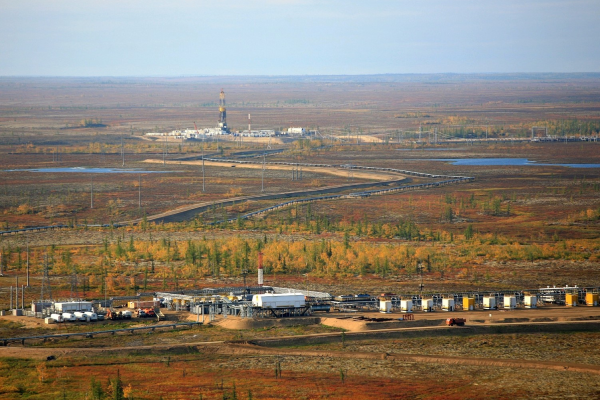Oil and Gas Production, Processing and Transportation
Historically, R&P Co. Grasys has been working together with the oil and gas industry by offering fail-safe nitrogen and oxygen production equipment, as well as gas treatment facilities. The gathered experience in design and manufacture of process sophisticated equipment for the oil and gas industry is instrumental for us in developing the best gas separation engineering solutions that are far beyond the reach of our competitors.

The Key Issues to Address
- Nitrogen purging in gas pipelines, repair and testing
- Creating inert atmosphere to ensure explosion and fire safety of production processes
- Nitrogen as separation gas for GPU gas seals of compressor stations
- Fuel gas treatment
- Gas treatment to meet the gas transmission system requirements
- Gas drying
- Stripping
- Natural gas and APG compression
- Hydrogen sulfide removal from hydrocarbon gases
- Gas injection
- Compressed air to supply pneumatic fittings and instrumentation of various equipment
- Compressed natural gas production for motor vehicle refueling
R&P Co. Grasys is well experienced in cooperation with oil and gas companies by offering the best possible and most efficient engineering solutions.
In the city of Dubna (Moscow region) Grasys started a high-tech first in Russia and the CIS production of hollow fiber gas separation membranes and membrane cartridges that find wide application in the oil and gas industry. This is one-of-a-kind research and production facility located within the special economic zone of technical-innovative type "Dubna". One of the strategically significant trends is the production of membrane cartridges for hydrocarbon gases separation, including helium concentrate recovery.
R&P Co. Grasys’ Products
Nitrogen Generation Units and Plants
High-purity nitrogen generation from atmosphere air using membrane and adsorption technologies.
Oxygen Generation Units and Plants
High-purity oxygen generation from atmosphere air for using in medicine and production sector.
Skid-Mounted Compressor Plants
Air compression. Compression of natural, associated petroleum and other gases.
Membrane-based Natural Gas Processing Units
Hydrocarbon gases treatment to meet the Customer’s requirements or to comply with the product specification.
Hydrogen Generation and Purification Plants
Hydrogen production from natural gas. Hydrogen purification. Hydrogen concentration from gas streams.
Methanol and hydrogen production from natural gas for small and medium-scale methane conversion.
Cryogenic Air Separation Units (ASU)
Production of nitrogen, oxygen, argon and mixtures of other gases from air using low-temperature rectification.
Hydrogen and helium concentration, removal of unwanted components from hydrocarbon gases.
Adsorbents for Gas Separation and Treatment
For nitrogen, oxygen, hydrogen, helium units, to dry air and hydrocarbon gases.












